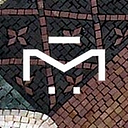Great moments in decorative mosaic art
American artist Jeff Koons once said, “Art has this ability to allow you to connect back through history in the same way that biology does. I’m always looking for source material.” This is especially true for mosaics, a creative tradition that dates back millennia.
For us to better appreciate mosaics, we must look back on its storied past. From its long history and master creators to world capitals and notable works, revisiting the colorful and multifaceted history of decorative mosaic art allows us to treasure the ingenuity and hard work that goes into the most contemporary of designs.
In the beginning
Mosaics have been a popular art form in both Western and Eastern cultures across the globe for thousands of years. The earliest mosaics have been found in a temple in Mesopotamia (modern-day Iraq) dating back to 3000 BCE. Made with ivory, seashells, and stones, these decorative, yet abstract pieces would pave the way for mosaics in Ancient Greece and Rome.
Ancient Greeks
The ancient Greeks in 400 BCE raised the early pebble technique in decorative mosaic art to a fine craft, with precise geometric patterns and detailed scenes of people and animals. According to ancient Roman historian Pliny the Younger, Sosos was one of the most renowned mosaic artists in antiquity. None of his work survives to this day; however, Roman copies tell of Sosos’ ability to create trompe l’oeil effects that created an optical illusion or three-dimensional effect.
Roman Empire
The ancient mosaic as it is widely known today came into fruition during the Roman Empire. Eager to adopt the artistic culture of the ancient Greeks, the Romans further refined the mosaic craft and transformed the art from exclusive to commonplace. Using more advanced technology, the Romans also made tiles more uniform in size and shape for easier application. This allowed for greater detail and realism.
Byzantine Empire and Medieval Period
From the 4th century until the Renaissance, decorative mosaic art lavishly ornamented Christian churches. Ethereal glass mosaic crafts adorned the ceilings and floors of these places of worship. Intricately detailed and glimmering with gold leaf and precious stones, these mosaics were meant to amaze churchgoers and pilgrims with portraits of biblical figures and early saints. During the Renaissance, however, the mosaic as an art form waned. Artists shunned the extravagance of religious mosaics, and painting gradually became the preferred medium.
Islamic architecture
Mosaics were a widely used form of decoration not only in Europe but in the Middle East as well. Highly geometric patterns are a staple of Islamic architecture, especially in the 7th and 8th centuries. These mosaics often featured repeating, mathematical, and symmetrical forms and vibrant colors that appeared in both the interiors and exteriors of mosques and other structures.
Modern era
Mosaics crafts were revived centuries later by modern artists at the turn of the 20th century. Great masters such as Antonio Gaudi helped keep the ancient art form alive and later influenced contemporary mosaicists. Other renowned artists such as Gustav Klimt would be inspired by Byzantine mosaics in painting their canvases.
Mosaics today
Mosaics are in a healthy state in the 21st century. They are used as kitchen backsplashes, craft projects, garden art, fine art, sculpture, as well as in public art. Just like in ancient times, they are still a striking way to accent the home, creating the feel of a grand villa.
For timeless, modern, or avant-garde mosaic designs, visit Mosaics Lab. We specialize in authentic and handmade mosaic art pieces brought to life by artisans who have mastered their craft for generations.
